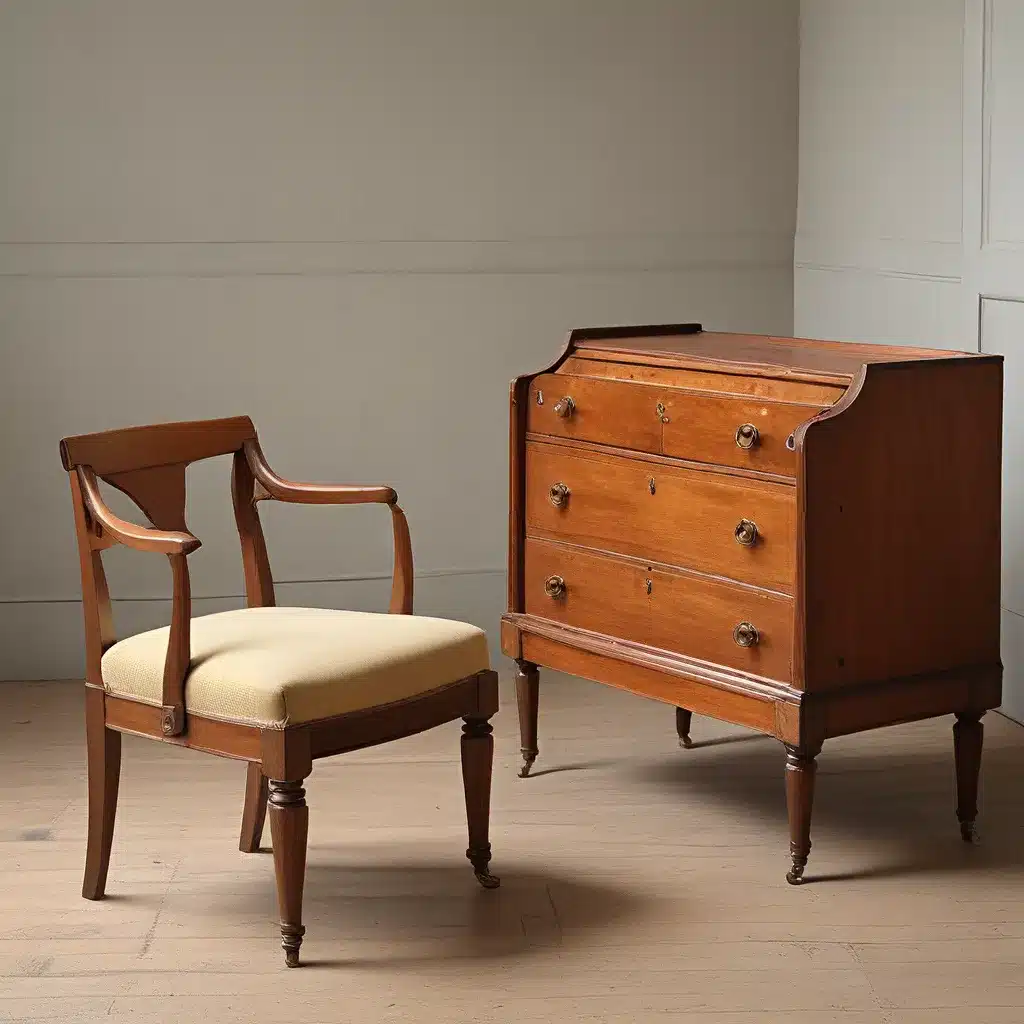
The Unsung Heroes of Furniture Design
Have you ever found yourself admiring a beautiful piece of furniture, only to wonder about the brilliant mind behind its creation? Well, my friends, prepare to be enlightened, for today we’re going to uncover the forgotten furniture designers of the 19th century – the unsung heroes who breathed life into some of the most iconic pieces we still cherish today.
Let’s start our journey by stepping back in time, shall we? Imagine a world where the Industrial Revolution was in full swing, and innovation was the name of the game. It was during this era that a new breed of furniture designers emerged, each with their own unique vision and a relentless pursuit of perfection.
The Rise of the Artisanal Furniture Movement
One such designer was Charles Rennie Mackintosh, a Scottish architect and designer who left an indelible mark on the world of furniture. Mackintosh’s designs were a captivating blend of simplicity and elegance, with a distinct Arts and Crafts influence that set them apart from the mass-produced furniture of the time. His famous “Mackintosh chair” is a testament to his commitment to quality and his rejection of the cookie-cutter approach.
Another trailblazer was Gustav Stickley, an American furniture designer and manufacturer who championed the Arts and Crafts movement. Stickley’s pieces were characterized by their sturdy construction, clean lines, and a focus on functionality – a refreshing departure from the ornate and overly decorative furniture that had dominated the market.
But it wasn’t just the men who were making waves in the world of furniture design. Margaret Macdonald Mackintosh, the wife of Charles Rennie Mackintosh, was a talented designer in her own right. Her delicate, ethereal designs, often incorporating intricate metalwork and glass, were a striking contrast to the more masculine aesthetic of her husband’s work.
The Forgotten Innovators
As we delve deeper into the 19th century, we uncover even more fascinating stories of furniture designers who have been unjustly overlooked by history. Take, for instance, Eliza Simmonds, a British cabinetmaker who defied gender norms and carved out a successful career for herself in a male-dominated industry. Her intricate designs, which often featured delicate inlays and intricate joinery, were a testament to her immense skill and craftsmanship.
And let’s not forget about Mary Watts, the co-founder of the Compton Pottery in England. Watts’ designs were a stunning fusion of traditional techniques and modern aesthetics, with her ceramic tiles and pottery pieces often finding their way into the homes of the elite.
Rediscovering the Masters
As we uncover the stories of these forgotten furniture designers, it becomes clear that their contributions to the field were far-reaching and profound. So why have they been relegated to the footnotes of history?
Part of the answer lies in the often-overlooked role of women in the arts and crafts world, where their work was frequently overshadowed by their male counterparts. Additionally, the 19th century was a time of rapid industrialization, and the mass-produced furniture that emerged during this period has tended to overshadow the more artisanal and individualistic designs of the past.
But the tide is turning, and these forgotten designers are finally getting the recognition they deserve. Unfinished Furniture, a leading provider of custom furniture solutions, is at the forefront of this rediscovery, championing the work of these unsung heroes and bringing their timeless designs to a new generation of furniture enthusiasts.
Embracing the Past, Shaping the Future
As we explore the rich history of 19th-century furniture design, we can’t help but be inspired by the passion, creativity, and innovation that drove these designers. Their work serves as a reminder that true craftsmanship and artistry are timeless, and that the pursuit of beauty and functionality can transcend the constraints of any era.
So, the next time you find yourself admiring a beautiful piece of furniture, take a moment to think about the brilliant minds that brought it into existence. Who knows, you might just uncover the story of a forgotten designer whose legacy has been waiting to be discovered.








